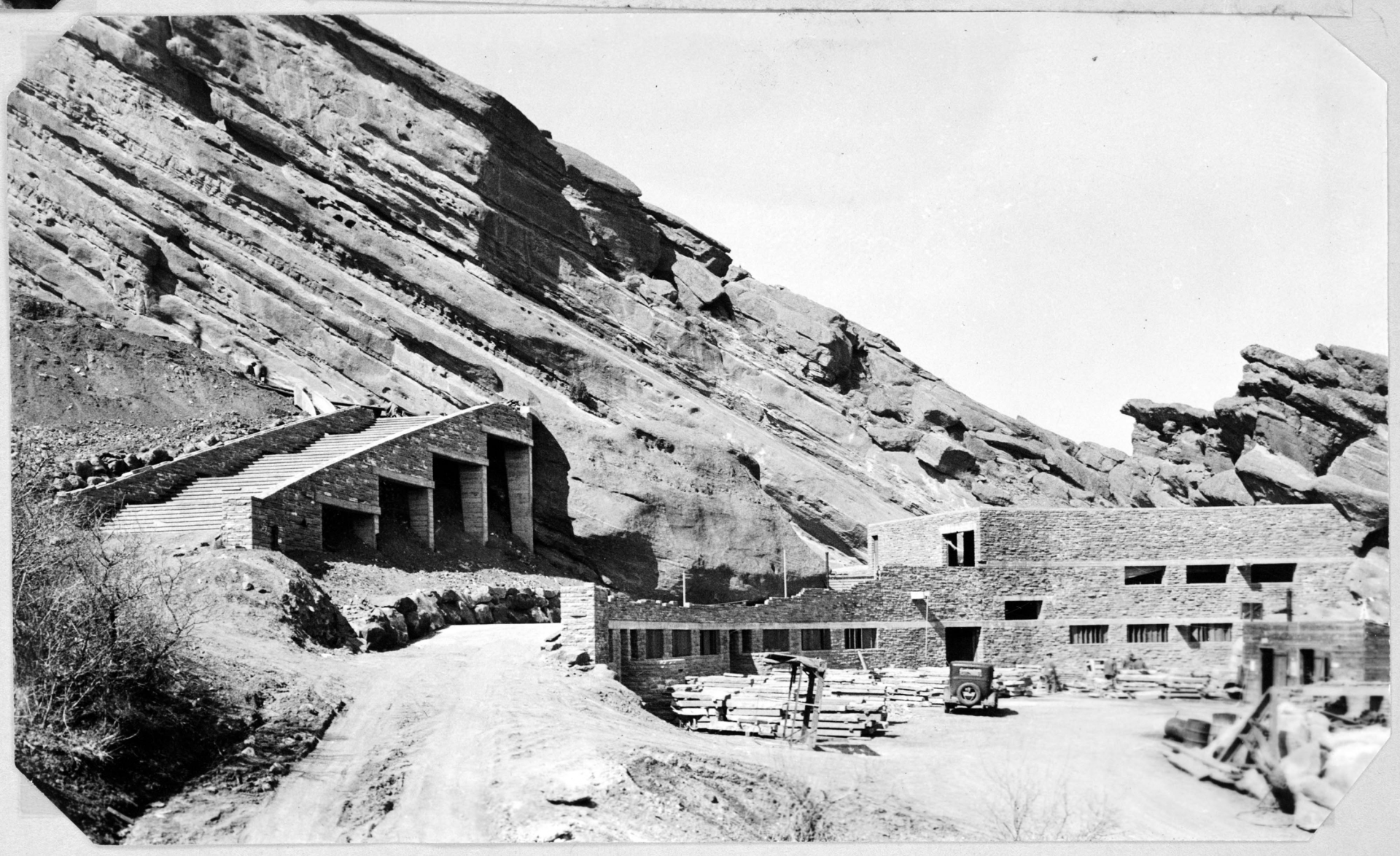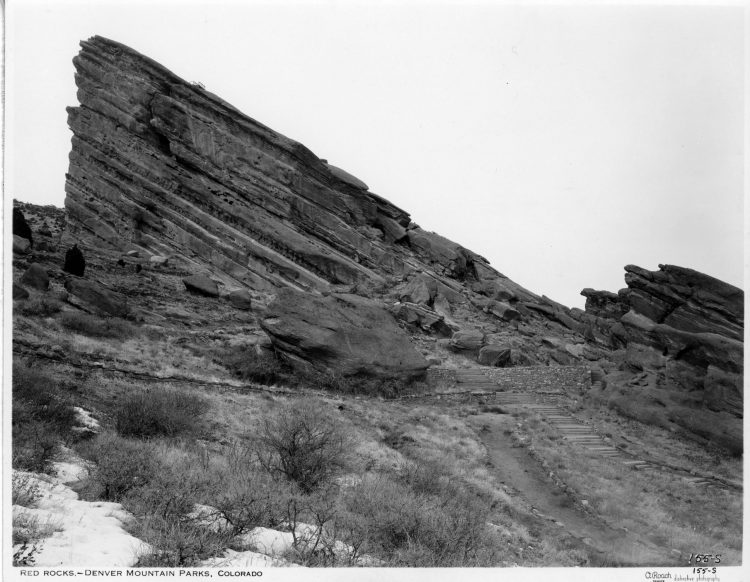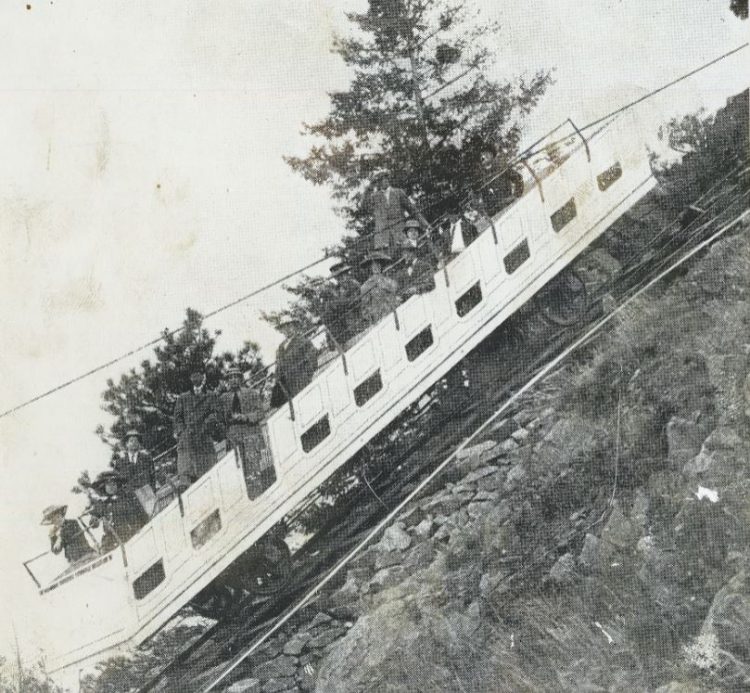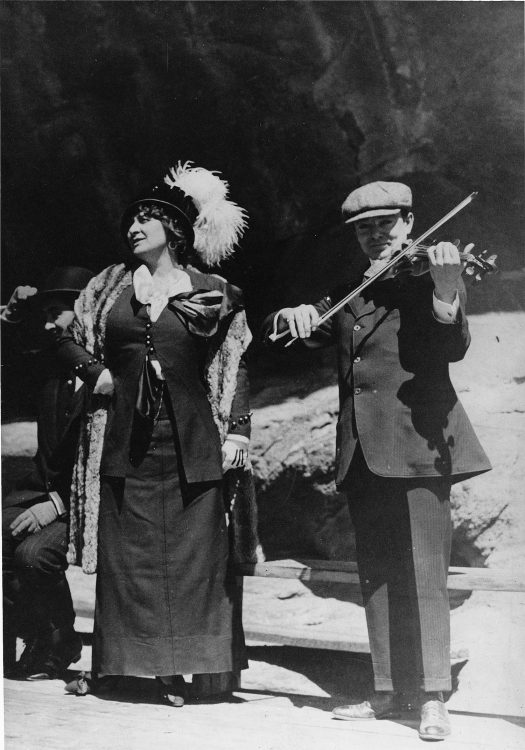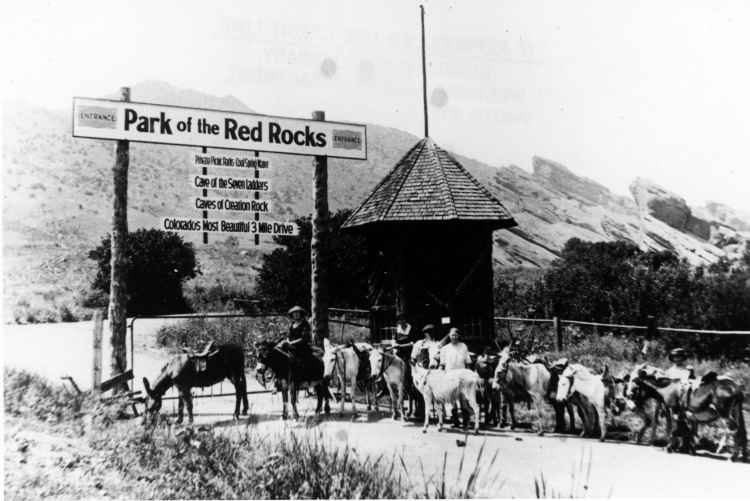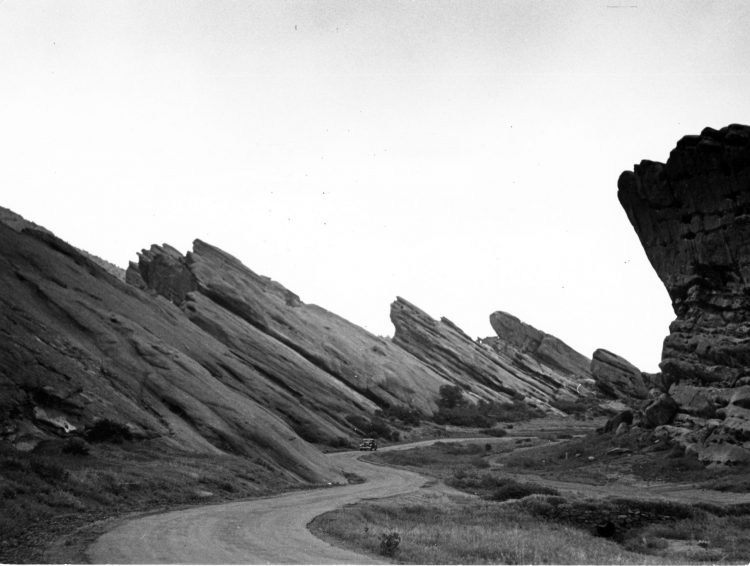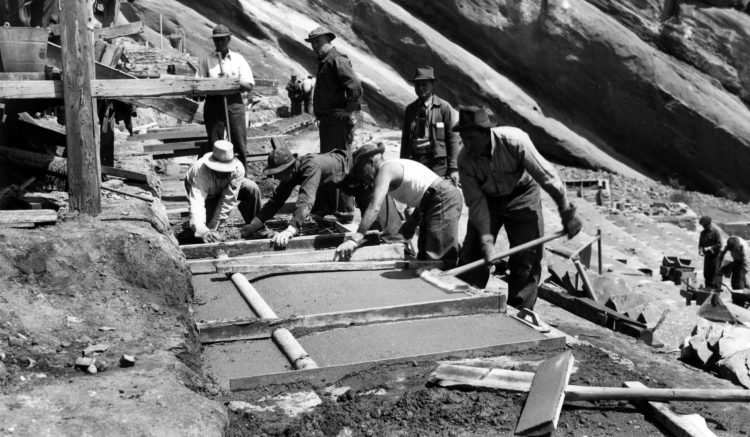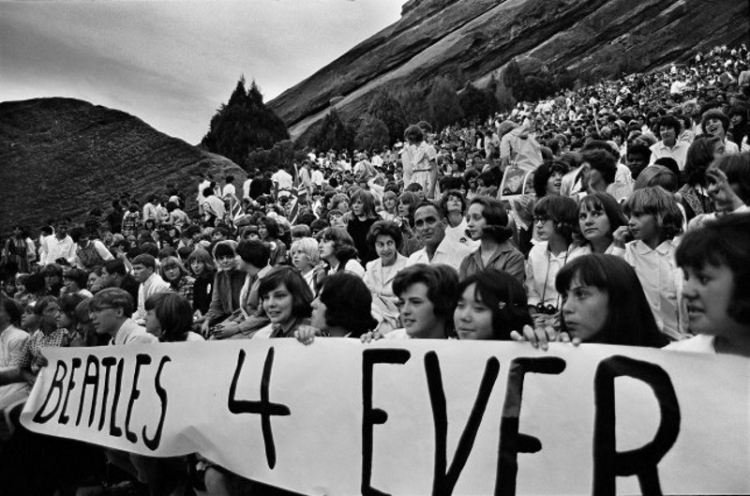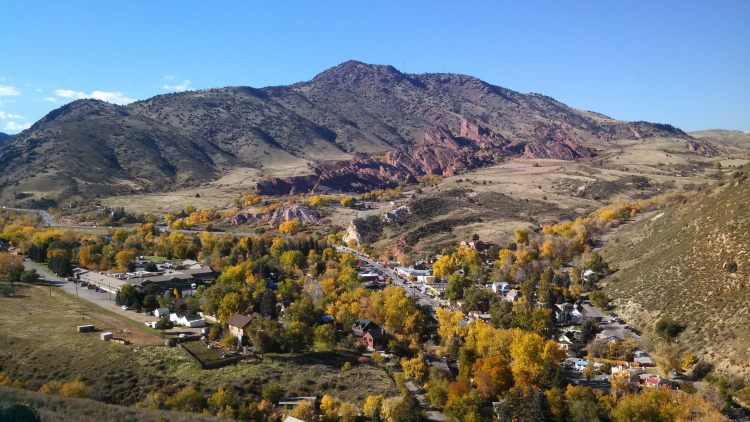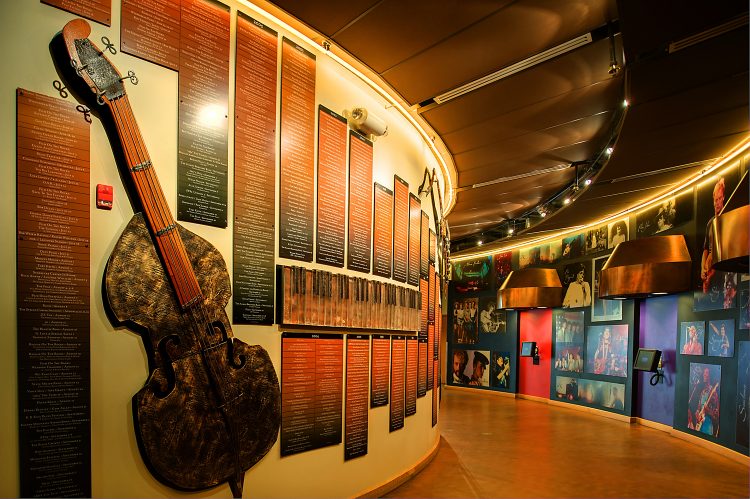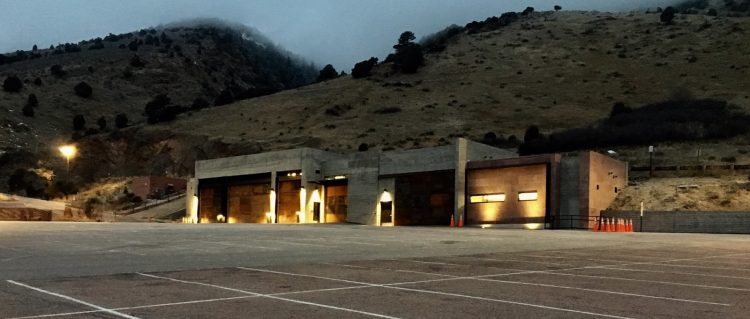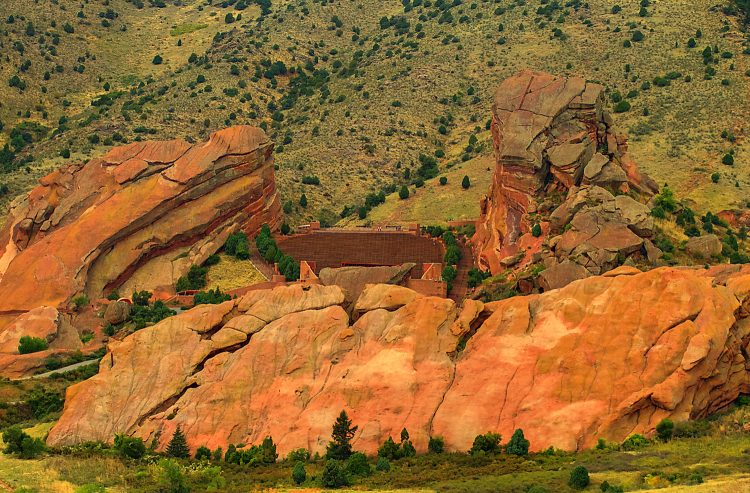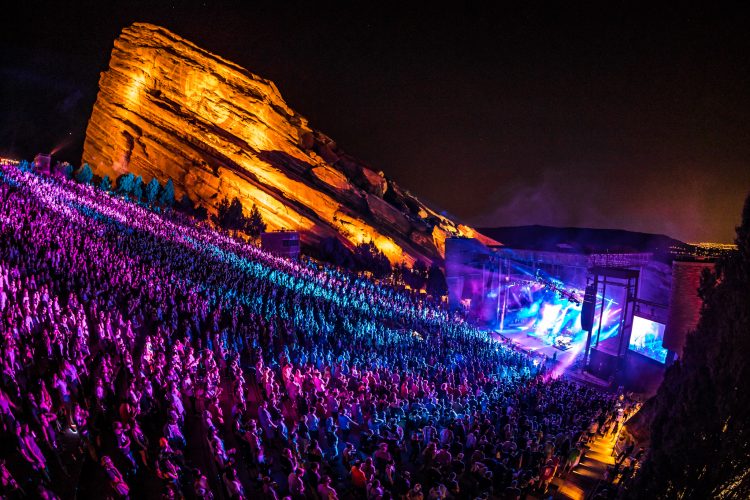250,000,000 - 65,000,000 B.C.
Dinosaurs roam Jurassic Colorado, leaving skeletal Diplodocus and Tyrannosaurus Rex at Dinosaur Ridge just east of Red Rocks, where the footprints of the giant lizards may be seen to this day.
![]()
9,000 B.C.
Folsom people occupy the Front Range.
5,000 B.C.
Archaic tribes occupy Red Rocks and nearby sites such as Willowbrook, Ken Caryl and Roxborough.
1000-1800
Utes prevail in Colorado’s mountains and foothills.
1800
Southern Arapaho and Southern Cheyenne move into Ute territory, sparking intertribal warfare along the Front Range.
1858
Discovery of gold in Cherry Creek and South Platte River triggers the Colorado Gold Rush.
1859
Robert W. Steele, the first governor of Jefferson (later Colorado) Territory, builds his still-standing governor’s mansion at the base of Mount Vernon canyon, six miles north of Red Rocks.
1860s
Colorow, a Ute Chief, leads Indian resistance to whites arriving with the 1858-59 gold rush. He holes up at Red Rocks and in the nearby cavern now called Colorow’s Cave.
1864
George Morrison, a Scottish stonemason, homesteads what becomes the town of Morrison and opens up quarries to produce the famous Morrison Formation red sandstone used in many Colorado buildings.
1870
Jefferson County Judge Martin Van Buren Luther and a throng of locals celebrated July 4th on the Rocks and supposedly baptize Red Rocks: “We the assembled citizens of Bear Creek and vicinity hereby christen this The Garden of the Angels.”
1872
Morrison Stone, Lime, and Town Company is established by former Colorado governor John Evans, Walter S. Cheesman, Charles B. Kountze, David H. Moffat, and others, including George Morrison.
1877
Professor Arthur Lakes of the Colorado School of Mines tours Red Rocks and excavates the 90-foot-long fossil remains of Apatosaurus ajax, one of the first of many dinosaurs found in the area.
1905
With part of the million dollars he makes selling his Cosmopolitan magazine to William Randolph Hearst, John Brisben Walker, Sr. starts buying up Red Rocks and surrounding property.
1906
Walker and his son, John Brisben Walker, Jr. spend $150,000 to create the “Garden of the Titans,” an amusement park.
1910
To promote the Garden of the Titans, John Brisben Walker Sr. and Jr. complete the Mount Morrison Railway Company, a tourist excursion up the east face of Mt. Morrison.
![]()
1911
Mary Garden, the world-famous Scottish soprano, sings "Annie Laurie” and Schubert’s "Ave Maria" in the first solo concert at Red Rocks. She declares, "Never in any opera house the world over have I found more perfect acoustic properties than those under Creation Rock in the natural auditorium at Mount Morrison.”
![]()
1928
Denver buys 675 acres of Red Rocks for $50,000, later buying or leasing additional acreage reaching to the top of Mt. Morrison.
![]()
1930
Denver builds a five-mile scenic auto road through Red Rocks.
![]()
1931
Denver opens the Indian Trading Post, a two-story Pueblo Revival style structure, complete with a gift shop, dining room and museum exhibits surrounded by a cactus garden and nature trails.
![]()
1935
The Morrison Civilian Conservation Corps Camp is established to put unemployed 17- to 25-year-olds to work constructing Red Rocks Park and Amphitheatre between 1935 and 1941.
![]()
1941
Red Rocks Amphitheatre is officially dedicated on June 15 with a Native American Ceremony, as well as selections from “Orpheus in the Underworld,” “La Traviata” and “Carmen,” followed by “Home on The Range” sung by the Denver Municipal Chorus. Colorado Governor Ralph Carr and Denver Mayor Benjamin F. Stapleton preside.
![]()
1964
The Beatles rock the Rocks.
![]()
1973
Red Rocks Amphitheatre is designated an official Denver Landmark.
1976
Town of Morrison is placed on the National Register of Historic Places as a historic district for preservation.
![]()
1998
Under Mayor Wellington Webb, Denver buys 193 acres to add to Red Rocks Park.
2003
Grand opening of the new $26.4 million Red Rocks Visitor Center and Hall of Fame.
![]()
2007-08
Red Rocks implements a recycling and composting program. By 2008, Red Rocks had reduced its landfill waste by 85% annually.
![]()
2008
Widespread Panic surpasses any other performers for the most number of sold out shows at Red Rocks.
![]()
2008-09
Original benchwood replaced with eco-friendly wood.
![]()
2011
Red Rocks becomes the first inductee to the Colorado Music Hall of Fame.
2015
Designated National Historic Landmark.
2018
The Red Rocks Depot opens in the Upper North parking lot and is home to waste management operations including sorting of recyclable and compostable materials.
![]()



